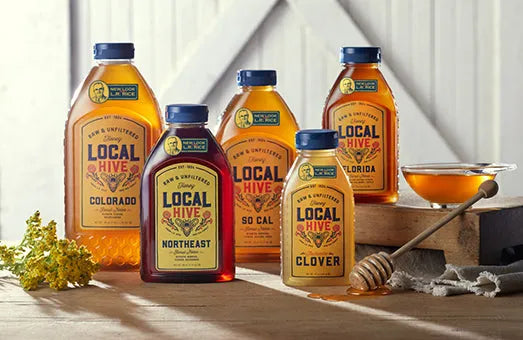How many kinds of honey are there?
Honey Facts
How many honeys are out there? Hundreds, thousands, even millions. It just depends on how specific you want to be.
On the low end, there’s at least as many varieties of honey as there are varieties of flowering plants that bees pollinate. A beekeeper can set up their hive in a field with only one kind of flower blooming and the resulting honey will have a unique flavor because of that flower’s nectar. There are dozens of these monofloral honeys out there: clover, avocado, tupelo, buckwheat, blueberry, sunflower, citrus and many more around the world. Clover grows almost everywhere in the U.S., so it’s the most common monofloral honey on our store shelves.
So, a few hundred. That’s a start, but there are also honeys made from a variety of plants. Picture it: a backyard beekeeper sets up their hive for the first time. The bees start buzzing around and pollinating everything in sight, sometimes traveling as far as two miles in search of nectar. The honey that hive makes paints a picture of everything that’s in bloom around the hive. As the seasons change, new flowers appear and the hive’s honey changes, too.
In each of these polyfloral honeys, there might be dozens of different nectars, so the number of possible combinations is at least in the thousands. What we know for sure is that there are at least 15 varieties – ours. Local honeys, tend to be polyfloral, with a variety of pollen sources from a certain region. These give the honey a unique flavor profile that’s tied to the region it’s from – and honey can be made anywhere. In winemaking, this is called terroir, and the principle’s the same when it comes to honey.
So, it’s clear that there are potentially thousands of kinds of honey out there. But, taking the wine analogy further, there’s a case to be made that every harvest of honey is unique. Because the bees pick their nectar sources, beekeepers have no way to ensure exactly what goes into their hives. Each time they harvest, the honey reflects a unique combination of the season, weather, geography and local plant life – like no other honey that’s come before it.
Never settle for honey that’s just “honey.” Find out where it’s from, look into how it’s made, and make sure it’s always raw & unfiltered. You’ll find that it’s got a story that makes it unique.

